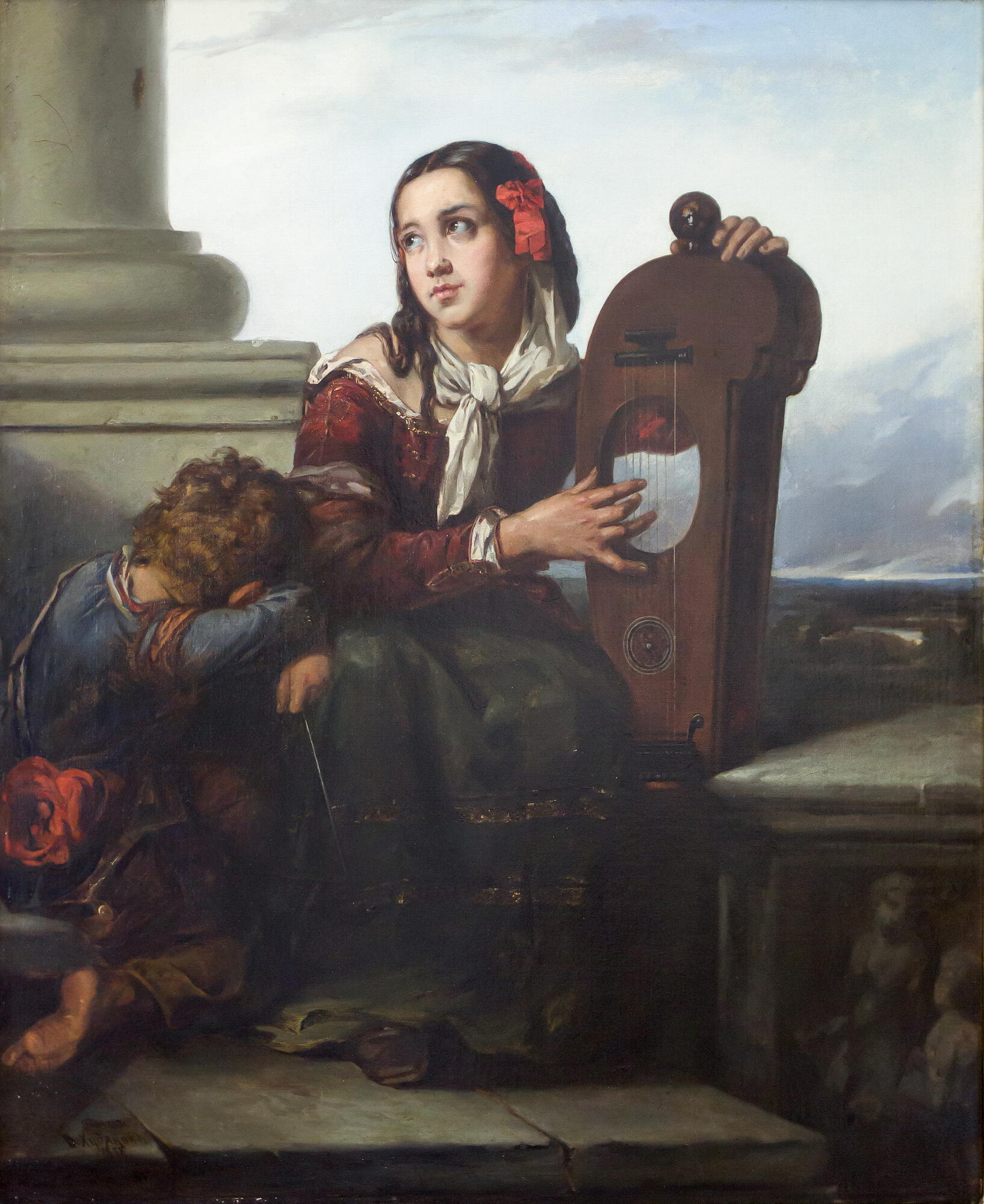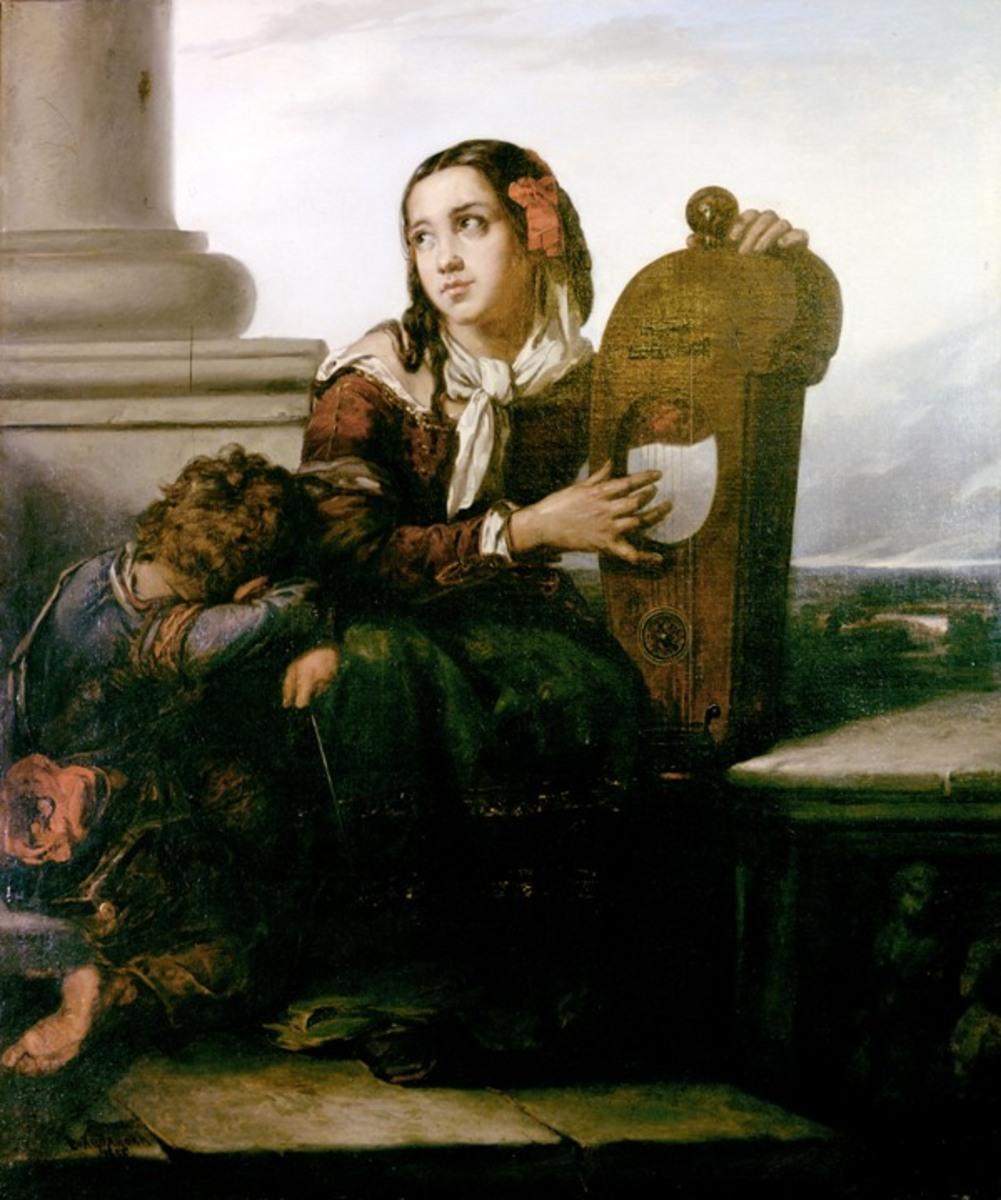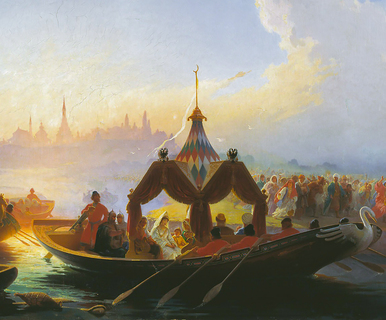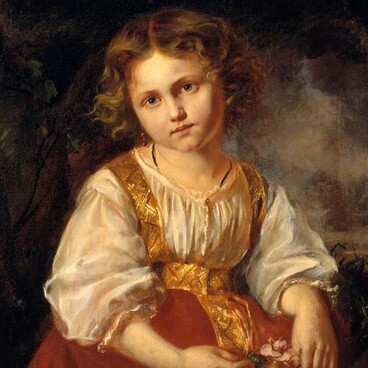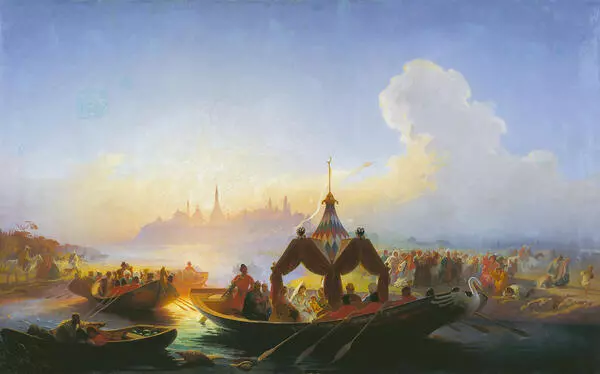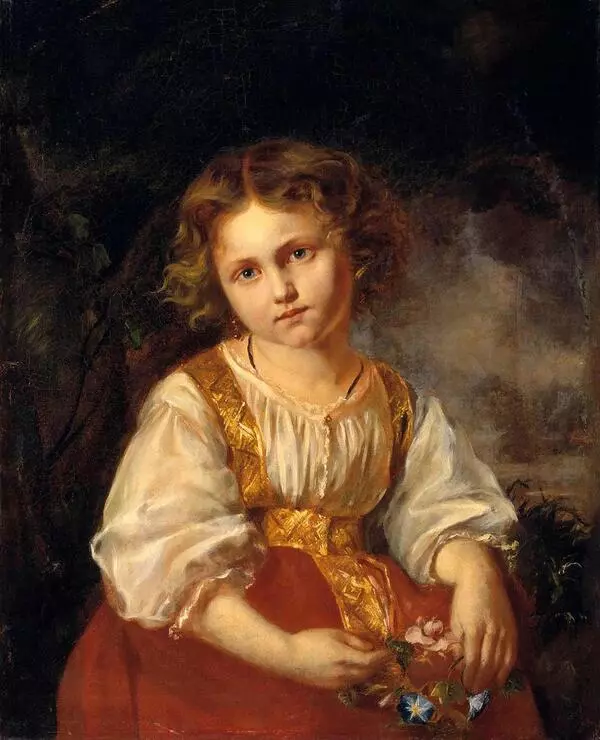Vasily Grigorievich Khudyakov, a Russian history, portrait and genre painter, spent four years in Italy. Every day the thirty-year-old artist recorded his observations in sketches and studied with local masters. The time he spent in Italy was one of the most joyful, liberating and fulfilling periods of his life. His painting “Traveling Musicians” confirms that the artist preferred sentimental stories and spiritual content.
Vasily Khudyakov depicts the traveling musicians on an open terrace in Lazio, not far from Rome. There is a picturesque flat landscape of central Italy in the background. The powerful silhouette of the column limits the space of the foreground and introduces an element of classicism into the composition of the picture. Academic canons can also be traced in the images of musicians — their poses are borrowed from works of classical art. The girl holds an ancient stringed instrument, a kind of zither, and the boy, who is tired from the long journey, has reclined at her feet. The work conveys a feeling of loneliness and melancholy.
In the painting from the museum collection, dull blue and dark cherry tones look especially deep against the light sky. In his special graceful style, Vasily Khudyakov enriches the color scheme by including the depiction of modest shiny jewelry in the girl’s clothes. The vibrant accents of red — the bow in the girl’s hair, the rosette on the boy’s clothes — visually unite the bright tones, and enliven the monochrome design. The white kerchief around the girl’s neck is painted with great skill: the complex nuances of cold silver-gray and bluish tones emphasize the tenderness and the blush on the young swarthy face.
Vasily Grigorievich Khudyakov was extremely good at rendering the features, character and national specificity. The flourish of ethnography and archeology contributed to the development of historical plots and interest in the past. Vasily Khudyakov had the talent to convey a fleeting intimate image. His art immediately finds an emotional response in the people’s hearts.
Vasily Khudyakov depicts the traveling musicians on an open terrace in Lazio, not far from Rome. There is a picturesque flat landscape of central Italy in the background. The powerful silhouette of the column limits the space of the foreground and introduces an element of classicism into the composition of the picture. Academic canons can also be traced in the images of musicians — their poses are borrowed from works of classical art. The girl holds an ancient stringed instrument, a kind of zither, and the boy, who is tired from the long journey, has reclined at her feet. The work conveys a feeling of loneliness and melancholy.
In the painting from the museum collection, dull blue and dark cherry tones look especially deep against the light sky. In his special graceful style, Vasily Khudyakov enriches the color scheme by including the depiction of modest shiny jewelry in the girl’s clothes. The vibrant accents of red — the bow in the girl’s hair, the rosette on the boy’s clothes — visually unite the bright tones, and enliven the monochrome design. The white kerchief around the girl’s neck is painted with great skill: the complex nuances of cold silver-gray and bluish tones emphasize the tenderness and the blush on the young swarthy face.
Vasily Grigorievich Khudyakov was extremely good at rendering the features, character and national specificity. The flourish of ethnography and archeology contributed to the development of historical plots and interest in the past. Vasily Khudyakov had the talent to convey a fleeting intimate image. His art immediately finds an emotional response in the people’s hearts.
